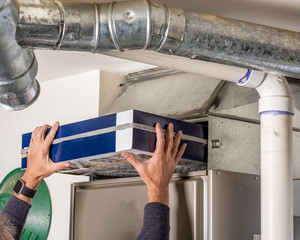When Is It Time For A Furnace Replacement?
Considering a furnace replacement? You may be wondering whether this is necessary, but some signs might indicate it’s time. Older furnaces often can’t clean and moisturize the air. As a result, your house air may feel stuffy and stale. This can cause people with allergies to feel uncomfortable, and you may also find yourself constantly scratching your throat. Frequent dust accumulation is also a sign that your furnace may be having problems, as is furniture or drooping plants.

A good way to determine if you need to replace your furnace is to consult a certified technician. A technician from HVAC company can evaluate your furnace and make recommendations about your next move. He or she can also explain which energy-efficient furnaces are on the market. This way, you can make the best decision for your home and family. However, before you get in touch with a contractor, be sure to research their background and reputation. You’ll be glad you did!
Some of the signs that it’s time for a furnace replacement include a high energy bill and difficulty in distributing heat evenly. A furnace’s lifespan is usually 15 years, but it can last longer than that. A furnace that’s more than 15 years old can also be difficult to maintain, resulting in high energy bills. Furthermore, the cost of repairs can be more than the price of a new furnace. So, it’s important to seek a second opinion before making a final decision about replacing your furnace.
The cost of a new furnace may seem daunting, but consider how much you’ll save in energy bills. Older furnaces lose efficiency and may require longer running to produce the same amount of heat. A new, energy-efficient furnace will save you money on your monthly utility bills while improving your home’s comfort. A new furnace will also be quieter and keep the house more evenly heated. Whether or not your heating bills will drop is a question of personal choice. If you’re not sure what kind of furnace will benefit you, consider getting an energy audit.
If you notice any of the above symptoms, it’s time for a furnace replacement. While you can make repairs if your furnace’s performance has been degraded, a full furnace replacement is usually more affordable in the long run. If you hear a booming sound, it might mean that your furnace is experiencing a problem with gas emissions. A lingering gas odor is another sign that it’s time to replace your furnace.
It may be necessary to move your existing furnace to a new location if you want to replace it. The process, however, can be expensive. A professional can install a new furnace and replace the old one. However, if you don’t know how to install ducts, you might end up with a malfunctioning system. The cost of moving a furnace can be between $2,000 and $3,000.
Installing a new furnace can be expensive and time-consuming, but it is possible to do it yourself. Keep in mind that prices will vary depending on the model, brand, AFUE efficiency ratio, and size of your home. For more information, consult a qualified HVAC professional. There are a variety of factors to consider when buying a new furnace, so you may want to consult a local HVAC expert before making any final decisions.
When it comes to replacement costs, forced air natural gas furnaces usually last 15 to 30 years if properly maintained. The cost of a new furnace can range from $3,800 to $10,000, including labor, and is based on a standard 80,000-BTU furnace in a 1,600-2,000 square foot home. Additional costs may apply if you need a higher-efficiency system, a larger heating capacity, or a different type of fuel.
The size of your system is another important factor. The size of your home determines how much heat it can provide, which can affect the comfort level. British Thermal Units (BTUs) measure furnace capacity and different-sized spaces require a different capacity. Besides the size of the space you need to heat, other factors such as window efficiency, air leakages, and insulation will also impact energy efficiency. If you purchase an oversized system, your home will cycle on and off more often and will also be noisy.
The lifespan of a new furnace is anywhere from 15 to 30 years, and many are covered by a new-product warranty for the first five or 10 years. Performing regular maintenance on your furnace can help you prolong its life. And remember that furnace replacement is an investment, so it’s always best to plan. You can’t afford to wait until your current unit breaks down. It’s best to replace your furnace as part of a planned home improvement project.
